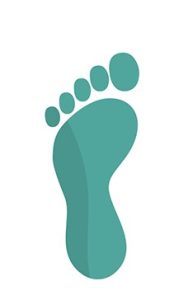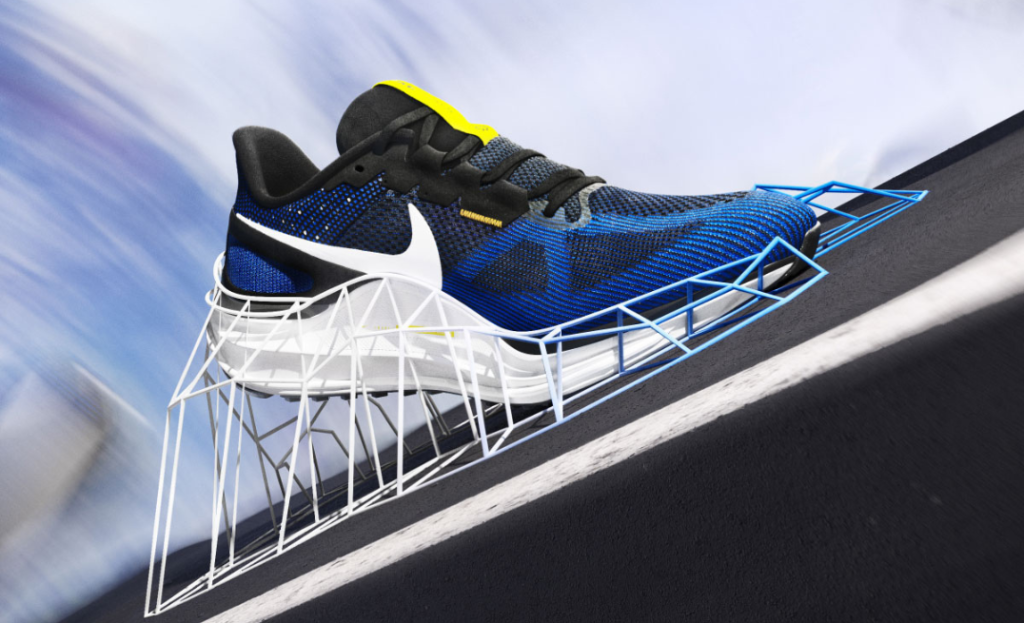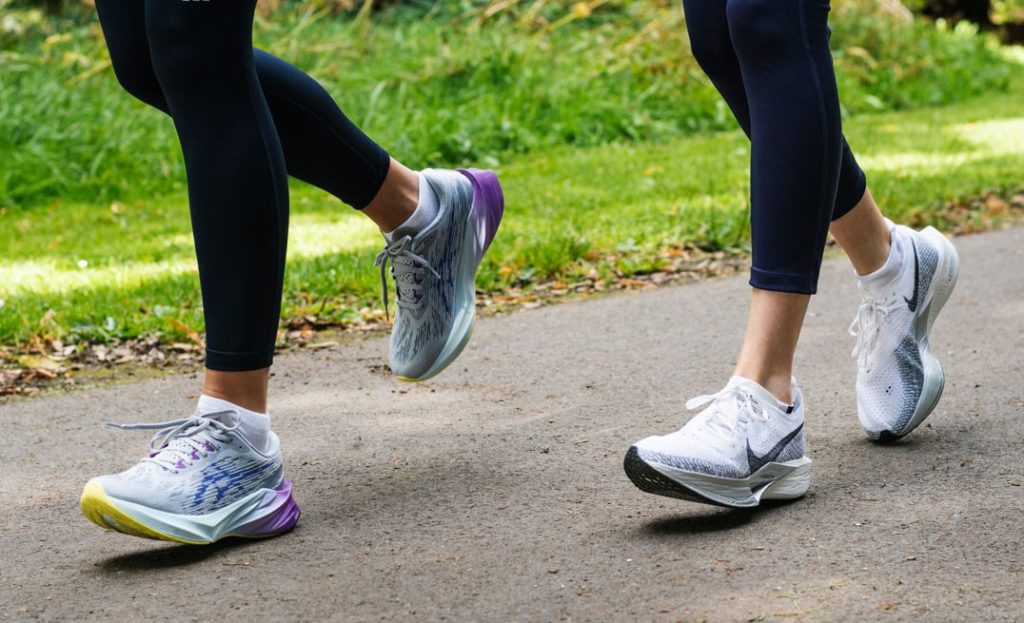Every stride counts when running, but something that’s often overlooked holds the key to your running success: your pronation type. Pronation is how your foot rolls during each step. It can be your best ally or worst enemy on the road to becoming a better runner. In this guide, we’ll delve deep into pronation and look at how understanding your pronation type can be a game-changer by enhancing your performance and protecting you against running-related injuries.
What is Pronation?
Pronation is how your foot naturally rolls inward when it makes contact with the ground during each step. This inward rolling motion helps your body absorb the impact of your stride and acts as a shock absorber.
When your foot strikes the ground, it lands on its outer edge and then rolls inward, distributing the force across your foot and lower leg. This allows your body to adapt to different terrains and conditions while minimising your risk of injury. Pronation is essentially the cushion that helps soften the impact of each stride, reducing the stress on your joints and muscles.
Identifying whether you overpronate (excessive inward roll), have a neutral pronation (a balanced roll), or underpronate (insufficient inward roll) allows you to choose the best running shoes for you and your feet. By knowing your pronation type, you can make better-informed choices that’ll make your runs safer, more comfortable, and more enjoyable.
Types of Pronation
There are three types of pronation, and each has distinct ways they affect your run and the running shoes you can run in.

Overpronation
Overpronation is when your foot excessively rolls inward (pronates). This means that your foot arch collapses too far inward when landing, leading to an exaggerated inward roll of your ankle.
This excessive inward motion can increase stress on the lower leg. It may be associated with common running injuries like shin splints and knee pain.
Runners with overpronation typically benefit from stability or motion-control shoes, which provide additional arch support and help control the excessive inward roll of your foot.
Neutral Pronation
Neutral pronation is considered the ideal or balanced type of foot motion during running. In this case, your foot lands on the outer edge and rolls inward slightly to distribute the force evenly across your foot. This moderate pronation is the most efficient and minimises the risk of injury.
These runners typically experience fewer foot-related problems, making this pronation type the most efficient.
Runners with neutral pronation can choose from various running shoe types but should prioritise comfort and proper fit.


Underpronation (Supination)
Underpronation or supination occurs when your foot rolls insufficiently inward. Instead of distributing the force evenly, the foot stays on the outer edge, preventing proper shock absorption.
This lack of inward roll can increase stress on your outer foot, resulting in potential issues such as ankle sprains and stress fractures.
Runners with underpronation typically benefit from cushioned or neutral shoes with plenty of shock absorption to compensate for the reduced natural pronation.
Why Should You Know Your Pronation?
Understanding your pronation type is essential before purchasing running shoes for several reasons:
Injury Prevention: Choosing the wrong type of shoes for your pronation can increase the risk of injuries. For example, overpronators may benefit from stability shoes, while underpronators need cushioned shoes.
Comfort: Running shoes designed for your specific pronation type provide better comfort and support during runs, reducing discomfort and fatigue.
Performance: Properly fitting shoes enhance your running performance by providing the necessary support and stability, allowing you to run more efficiently.
Longevity: Wearing shoes that align with your pronation type can extend the lifespan of your running shoes and save you money in the long run.
How to Find Your Pronation Type
Knowing your pronation type is crucial for finding the right running shoes and preventing potential injuries. Here’s a step-by-step guide to help you self-assess your pronation type:
Step 1: Find a Flat, Clean Surface
Choose a flat and clean surface, such as a smooth floor or a piece of cardboard.
Step 2: Gather Supplies
- Grab a bowl of water, a piece of paper, and a towel — you’ll need these to wet your feet and make footprints.
Step 3: Wet Your Feet
- Dip your feet into the water bowl, ensuring the soles are evenly wet.
Step 4: Create Footprints
- Stand on the flat surface with your feet hip-width apart. After a few seconds, step off the surface onto the paper. This should leave wet footprints on the paper.
Step 5: Examine Your Footprints
- Analyse the wet footprints you’ve created and use the guide below to determine your pronation.

Overpronation: If your footprints show a complete imprint of your foot with little or no gap between the heel and the ball of the foot, you likely have overpronation.
Neutral Pronation: You have neutral pronation if your footprints show a moderate inward curve at the arch, with a distinct curve but not a complete imprint.


Underpronation (Supination): If your footprints show only the outer edge of your foot with a noticeable gap between the heel and the ball of the foot, you likely underpronate.
Effects of Pronation on Running
Understanding how your pronation type affects your running and the potential injury risks is essential for choosing the right running shoes, adjusting your running form, and implementing injury prevention strategies. Let’s look at each type and the impacts:
Overpronation
Overpronation involves an excessive inward roll of the foot. This can lead to several mechanical issues, including:
- Reduced Shock Absorption: Overpronators may struggle to absorb impact force efficiently, leading to greater stress on your lower leg.
- Altered Gait: The excessive inward roll can result in an inefficient gait, potentially leading to decreased running efficiency.
- Instability: Overpronation may cause the foot and ankle to become less stable during the landing phase of the stride.
Common Injuries
- Plantar Fasciitis: Overpronation can strain the plantar fascia, a band of tissue in the sole of the foot, leading to inflammation and pain.
- Shin Splints: The extra stress on the lower leg can contribute to shin splints.
- Runner’s Knee: Overpronation may cause the knee to rotate inward, potentially leading to pain and injuries like patellofemoral pain syndrome.
Neutral Pronation
Neutral pronation is the most efficient, so it typically positively impacts how you run. Runners with neutral pronation:
- Efficiently distribute impact.
- Experience less stress on the lower leg joints and muscles.
Common Injuries:
Runners with neutral pronation tend to experience fewer injuries directly related to the movement of their feet. However, they can still be susceptible to overuse injuries like Runner’s Knee and Achilles Tendinitis.
Underpronation (Supination)
Underpronation, or supination, involves insufficient inward roll of the foot. This can lead to the following running issues:
- Reduced Shock Absorption: Supinators may have difficulty absorbing shock effectively, leading to increased pressure on specific areas of the foot.
- Reduced Stability: The foot may remain rigid and less adaptable to uneven terrain, increasing the risk of ankle sprains.
Common Injuries
- Stress Fractures: Supinators may be more susceptible to stress fractures due to the limited shock absorption, particularly in the tibia or metatarsal bones.
- Achilles Tendinitis: The Achilles tendon may become strained due to the lack of natural pronation, leading to tendinitis.
- Ankle Sprains: Reduced foot flexibility and stability can increase the likelihood of ankle sprains when encountering uneven terrain.
Choosing the Right Running Shoes
Choosing the right running shoes based on your pronation type is critical for comfort, performance, and injury prevention.

Overpronation
Look for stability or motion-control running shoes to provide additional arch support and control excessive inward rolling.
Features to Consider:
- Medial Support: These shoes often have a firmer midsole on the inner side (medial side) to counteract overpronation.
- Arch Support: Adequate arch support helps maintain proper foot alignment and stability.
- Structured Upper: A structured upper with overlays can provide better support and stability for the foot.
- Durable Outsole: A durable outsole material ensures long-lasting support and cushioning.

Neutral Pronation
Runners with neutral pronation have more flexibility in choosing their shoes. Consider a neutral shoe for optimal comfort and versatility.
Features to Consider:
- Cushioning: Look for plenty of cushioning in the midsole to provide comfort during longer runs.
- Lightweight Design: Many neutral shoes are designed to be lightweight, promoting a natural feel and agility.
- Breathability: Choose shoes with breathable uppers to keep your feet cool and dry.
- Flexibility: Neutral shoes often offer good flexibility to accommodate a natural stride.
Underpronation (Supination)
Opt for cushioned or neutral shoes that prioritise shock absorption and flexibility to compensate for the limited inward roll.
Features to Consider:
- Extra Cushioning: These shoes should have generous cushioning to absorb impact effectively.
- Flexibility: Look for a flexible sole that allows your foot to move naturally and comfortably.
- Neutral Arch: Shoes with a neutral arch design are often suitable for supinators.
Understanding your pronation type is an essential part of your running journey. It’s the key to unlocking your potential, enhancing your performance, and protecting yourself against injuries.
We’ve explored the three main pronation types: overpronation, neutral pronation, and underpronation (supination), and the significant impact each can have on your running experience.
Remember that your pronation type doesn’t define your abilities as a runner, but understanding it empowers you to run more safely and comfortably. So, whether you’re a seasoned marathoner or just starting your running journey, take the time to determine your pronation type and invest in the right shoes – your feet will thank you. Plus, your runs will become more enjoyable and rewarding. Happy running!



